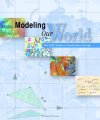- Utilize Trimble software and hardware to collect GPS data
- Discuss GPS Pathfinder Office utilities
- Build a Data Dictionary in GPS Pathfinder Office
- Perform mission planning for GPS data collection
- Describe the rigorous data collection parameters utilized in TerraSync to ensure sub-meter (sub-foot) accuracy.
- Set up data collection parameters in TerraSync
- Differentially correct GPS data using Pathfinder Office
- Convert GPS data to shapefile format
TERMS TO KNOW
- MS Active Sync
- .ssf
- .cor
- Differential Correction
- WAAS
- Post-process
- TerraSync
- GPS Pathfinder Office
- Multipath
- PDOP
- SNR
- Elevation mask
ACTIVE LEARNING EXERCISE
STEPS TO A TRIMBLE GPS FIELD SURVEY PROJECT
- Project setup (Pathfinder Office)
- Database design / Field Reconnaissance (Pathfinder Office)
- Project / Database transfer to TerraSync
- TerraSync settings and set-up
- Field data collection
- Post-process differential correction
- Export to GIS
ACTIVE LEARNING EXERCISE
Steps 1 and 2 - Project set-up, designing your database, and buidling a data dictionary
Steps 3, 4 and 5 - Tranfering Data, Mission Planning and more ...
- http://docs.google.com/Doc?id=ddh8bbwd_654fm9927dj
- connect GPS
- conduct mission planning
- explore GPS Pathinder Office utilities
- Collect GPS data using TerraSync
- Transfer and differentially correct GPS data
- GeoXT (TerraSync) QuickStart Guide
SUPPLEMENTAL RESOURCES
- Trimble TerraSync Getting Started Guide
- GeoXH Handheld
- GeoXT Handheld
- http://www.trimble.com/support.shtml
HOMEWORK
TerraSync Evaluation Demo for your desktop PC
Follow this Evaluation Guide using the Demo above loaded on your desktop
